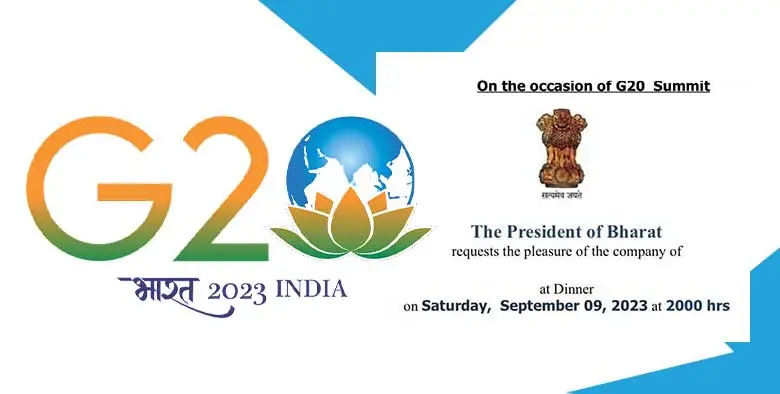Top Stories
- Know Everything About Nipah Virus, Which Is Back In Kerala Again
- Kevin Porter Jr Arrested On His Girlfriend’s Assault Charge
- Market Change Overnight - Know The 8 Things That Did It
- Who Are Alba Baptista And Chris Evans Married On The Weekend?
- Disrupted India vs Pakistan Asia Cup 2023 Match on Reserve Day
- 10 Common Foods That Contain No Calories or Are Very Low in Calories
- Men’s Styling Tips - Know the 9 Common Style Mistakes to Avoid
- Coco Gauff Beats Karoline Muchova and Reaches the US Open Final
- Danny Masterson Gets Life Sentence of 30 Years for Two Rapes
- Experience A Splendid Vacation in Kashmir with These 15 Gorgeous Sights
- India
- Thrusday , April 25, 2024
- Last Published Sep 12, 2023, 6:48:32 PM

Uber Files: A Dark Side of 2014 Uber Rape Case We Weren’t Prepared For!
Recently, a leading journalism agency, The Guardian, has shared Uber files with the International Consortium of Investigative Journalists (ICIJ). The data was shared with the sole purpose of investigating how big companies achieve their reputation by adopting various illegal tactics, such as rule-breaking, duping, and lobbying. These documents revealed how a wave of panic surfaced on the forehead of Uber's top brass after a rape case in Delhi. The rape case created panic for the entire organizational setup, from Uber's regional office to its headquarters in San Francisco. It is because the Uber files have exposed hundreds of emails and internal communications links between top officials in the aftermath of the rape case.
The 2014 Delhi Uber Rape Case: What Exactly Happened?
The 2014 Delhi Uber rape case was of a woman passenger who was raped by the driver while she was riding in an Uber cab in New Delhi on December 5, 2014. The documents highlight the worldwide damage control exercises the company's top officials followed after the backlash it faced due to the rape case. The rape case of New Delhi was not the only one that challenged the company's reputation in the global market. In addition to it, Uber has a long history of damage management through illegal practices. Well! Looking after its regular damage handling structure, the top leadership of Uber took certain steps which contributed to the exit of Uber co-founder and CEO Travis Kalanick. However, those actions were taken after the company achieved a reputed position in the global market.How Uber Cleared Its Name From The New Delhi Rape Case?
From the revealed documents, there emerged two distinct threads pertaining to the New Delhi rape case. These threads involved:- The company's blaming strategy immediately took the line that the things responsible for the Delhi rape case were the outcome of the ‘flawed’ Indian system of conducting no background checks (BGC). The company's officials claimed that the flawed Indian system was the sole reason behind the incident of a sexual offence.
- Second, after the case attracted public's attention, Uber, rather than putting additional safety features on its ride-sharing app, started putting its efforts into preventing a ‘reputational’ fallout in other global markets.
What Has The Uber Files Revealed?
Following the rape in a Delhi Uber cab, John Condo, Uber's Head of Public Policy in Asia, on December 9, 2014, dramatically wrote to the company's top officials. In his letters, he mentioned: “It is important that we show compassion and express our willingness to develop a longer-term solution to stop this pandemic of violence against women in India.,” In that trail mail, some suggested technological up-gradation and asked for a country-wise spreadsheet for BGCs for its products (drivers). In those revealed communications, special emphasis was given to pitching the blame to Indian authorities. People can better interpret through these excerpts: Mark MacGann, then Head of Public Policy for Europe and the Middle East, wrote on December 8: “We're in crisis talks right now, and the media is blazing…The Indian driver was indeed licensed, and the weakness/flaw appears to be in the local licensing scheme… the view in the US is that we can expect inquiries across our markets on the issue of background checks in the light of what has happened in India,” From the senior-most staff, Niall Wass, the then Uber's Senior Vice President for Europe, Middle East, and Africa, wrote to all staffers on December 9: “We had done what was required in terms of the Indian regulations. However, it's clear the checks required for a driver to obtain a commercial license from the authorities now appear to be insufficient as it appears the accused also had some previous rape allegations, which the Delhi police check did not identify (in what's called a character certificate),” One week after the rape incident, Mark MacGann again wrote an Email to his team: “We are in the process of platinum-plating our background checks in other regions, given the issue in India (where the official State system is at fault, not Uber).” These excerpts are themselves sufficient to present a picture how big companies, in order to prevent their image in the global market, blame others for their interests. However, the rape incident created a ‘worst-case scenario’ for Uber in the capital. It was because the Delhi government banned its services with immediate effect. The services were resumed after seven months after the said event when Uber India sought intervention from the Delhi High Court to bring its cabs back on the roads. According to revealed documents, the company had serious apprehensions that the ban in Delhi could hamper its reputation and operations in other cities as well.Other References To Uber's Response
Uber's case handling through the blame game was not limited to Delhi's case only. Rather, the company has a long history of illegitimate practice adoption for handling other cases in the past. Some of which involve: Email exchanges between Juan Batiz, a senior executive, and David Plouffe, Uber's high-profile vice president for policy and strategy. In one of those email exchanges with the title ‘threats’, Batiz argued Uber's case: “The fact is that we are not taxis; hence taxi regulations do not apply to us. I think taxis are really looking to get rid of current burdensome and corrupt requirements which they face today more than banning Uber-like products…” In those communications, Plouffe was also informed how the City Taxi Association in Mexico had filed a lawsuit asking about the ban provision for Uber-like gig economy carriers. In his letter, Plouffe wrote: “In their communication, the association took the reference of countries that have banned the service and also mentions India's most unfortunate events,” Plouffe then mentioned the threats from other countries as well. He added: “Wondering if you are concerned — and it's not directly connected to India but gives them more courage on the unlicensed argument especially — about any other cities/countries strengthening their arguments against us/taking action.” He also asked top Uber Managers: “Can you guys lay out other places where you think in light of India/reputation issues, you could see courts or regulators find a way or reason to shut us down?” In another email dated December 23, 2014, Plouffe indirectly mentioned the loopholes in the app's user-friendliness. In that letter, he wrote: “Driver verification capabilities will be a necessity — we are exceedingly vulnerable there and only a matter of time before we have an incident (Chicago could be it, hope not) where that becomes a global problem for us,”How The Rape Case Impacted Uber's Authoritative Structure?
Other email references from January 2015 shows that the incident of rape impacted the mindset of top Uber brass, including Kalanick, who postponed his proposed visit to India. One of those emails was from Allen Penn, then Asia's Head of Uber International. In his mail, he listed the advantages of postponing the India trip for Travis. His reasons involved:- Have a lead time for high-level meetings (PM and cabinet).
- Let the air clear further on the rape. This will provide enough space for a higher success rate in government and business meetings.
- Get Delhi back live… and thus not have that ban cloud.












